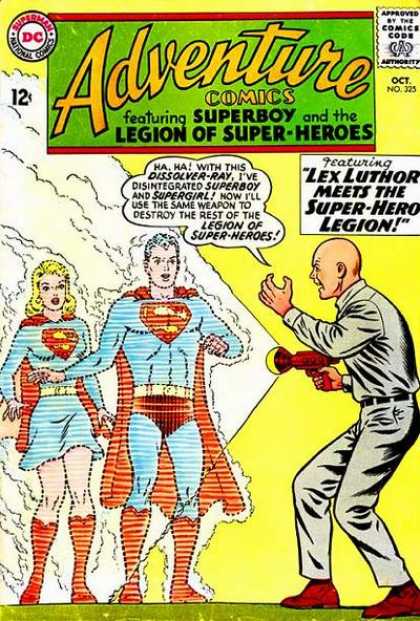The buzz is all over the Internet, so I’m probably not
giving away any spoilers, but just in
case:
SPOILER WARNING: THIS
POST DISCUSSES PLOT ELEMENTS OF THE FILMS MAN
OF STEEL AND THE DARK KNIGHT, AS WELL AS OTHER STORIES. READ AT YOUR OWN
RISK.
Ready now?
Okay, to continue: It’s true.
Superman kills.
Once we move past the shock value, though, the questions
before us are: Is the fact that Superman kills necessarily a bad thing? Was it necessary? Did director Zack Snyder and producer/writer Christopher Nolan
deliberately turn the Man of Steel into the Dark Knight?
Fans are understandably upset when a beloved hero and
cherished icon behaves in less-than-iconic ways. Some claim that Superman
should have found another way because, after all, he’s Superman.
While this circular reasoning doesn’t answer the
questions posed above, it does illustrate how important the character of
Superman still is to us, even after 75 years of existence, and how he embodies
the ideals we cherish. These ideals were even best expressed in the 1950s The Adventures of Superman television series: truth, justice, and
the American Way.
But just as America sometimes fails to live up to its own
ideals, so, too, does its quintessential hero fall short—and that, for storytelling purposes, can be a good
thing.
Before we discuss why, though, let’s look at a few other
incidents where superheroes have taken life.
This phenomenon, after all, is not without precedent. It goes back
nearly 50 years at least.
Star Boy
In Adventure Comics # 342, March 1966, Star Boy—a member of Superboy’s buddies from the future, the
Legion of Super-Heroes—kills Kenz Nuhor, a bad guy intent on killing him. Since
he acted in self defense, Star Boy is cleared by the Science Police. However, that’s
not good enough for his Legion comrades. They haul him before a court martial,
convict him of violating their code, and expel him.
The message of the story is clear: superheroes do not kill.
They are held to higher standard than us mere mortals.
Yet the story also illustrates the flaw in that standard.
The Legion’s Constitution, we are told, is amended shortly after to permit
killing in self defense. Not that doing so does Star Boy any good.
(Not to worry,
though. Nine issues later, the Legion had a change of heart and readmitted
him.)
This story remains controversial among Legion fans to this day. Could Star Boy have disabled Nuhor without killing him, as the story suggests? Even if he could, should he have been held to an impossibly high standard when he had only a split second to act?
It's telling that Superboy (a teenaged Superman)—the very hero upon whom the Legion's code is based--defends Star Boy at his trial. Because he is invulnerable, Superboy explains, he has less cause for killing than the other Legionnaires. Interestingly, the Legionnaires don't take this explanation into account when they vote to expel Star Boy. The ideal—as expressed by the code—prevails.
Hawkeye
In Avengers # 229,
March 1983, during a climactic battle with the criminal scientist Egghead, Hawkeye
the Archer shoots an arrow into the barrel of a Egghead’s “blaster” gun just as the villain fires. The resulting backlash
kills Egghead.
Yes, it was an accident, but the villain died nonetheless.
Hawkeye, too, is cleared by the authorities and—unlike poor
Star Boy—by his superhero comrades, as well. He spends all of about two seconds feeling
angsty before deciding he can’t feel sorry for Egghead: “If
anyone deserved this, he did!” Hawkeye ruminates in the next issue.
While Hawkeye’s attitude may sound callous, it could also be
seen as a healthy way of dealing with the unimaginable. Killing, it is said,
damages the soul of the killer as much as it takes away life. In modern
times, we are just starting to understand the effects of PTSD and wounded souls upon soldiers and police officers, who often must kill in the line of duty.
This story illustrates why killing should be avoided, but
how it sometimes cannot be.
Batman
Yes, even Batman—in spite of some commentators’ claims—took life.
In The Dark Knight film, Batman pushes
Harvey Two-Face off a building when the latter threatens Jim
Gordon’s young son. Both hero and villain fall. Batman survives. Harvey does
not.
Some may claim that Batman did not intend to kill
Two-Face; however, the result—as in Hawkeye’s situation—was the same. Besides, one
could argue that Batman should have known, given the height of the building and
his opponent’s lack of Wayne Tech-created armor, that death was likely to
result. In any case, Batman, as the saying goes, did what had to be done.
The lesson: What has to be done isn’t always pretty.
Of course, many commentators have pointed out that Supeman is
not Batman. Superman is about the joy of
being a superhero (many reviewers have criticized Man of Steel as "joyless"), whereas Batman is about striking terror
into the hearts of criminals.
Batman, they seem to suggest, would be more
justified in killing than Superman because he lives in a grim, dark, and dirty
world while Superman lives in sunlight, primary colors, and Kansas.
And yet, as anyone from Kansas (or elsewhere) who has sent
loved ones off to war knows, sometimes our ideals collide with reality and come
back to us changed.
So, why was it necessary from a story-telling standpoint for Superman to kill? Three reasons:
1. It shows that ideals are important. Even if
the ideals are simplistic and all-encompassing such as “heroes don’t
kill,” heroes must believe in something higher than themselves. (The difference between Superman and General Zod, we are told, is that Zod and his followers have no moral code.)
2. It shows that ideals, however, are not
perfect. No ideal or standard can
accommodate every situation or solve every problem. Ideals guide us, but they do not do our thinking or decision making for us.
3. It shows the
difficult choices heroes (and all of us) have to face. Rigid adherence to
an ideal can produce disastrous results—look at the 9/11 hijackers for a
real-world result.
Had Superman not acted, Zod would have fried a man, woman,
and two small children. Superman, then, would have been an accessory to murder,
regardless.
(And, yes, the filmmakers could have written in some fail-safe
where Superman wouldn’t have had to make that choice. It was a gutsy decision
that they did not.)
This is not to say that superheroes should kill with abandon
or without consequences. In fact, one of
the movie’s failings (and it has several) is that it blithely ignores the
thousands who must have perished when all those buildings collapsed during
Superman and Zod’s battle.
This failing, of course, is not unique to Man of Steel. Most Hollywood
blockbusters these days follow the ethic of making as many things explode as
possible. Modern blockbusters resemble video games in their nonstop focus on
action. This, I’d argue, is irresponsible film making, but that’s the subject
for another post.
However, the fact that Superman violates his own code
against killing is not in itself a weakness of the film. Rather, it challenges
us on two fronts: to consider what a superhero can and cannot do, and to
examine the limits of the ideals we impose on heroes and on ourselves.
Perhaps that’s the best thing any movie can do.








